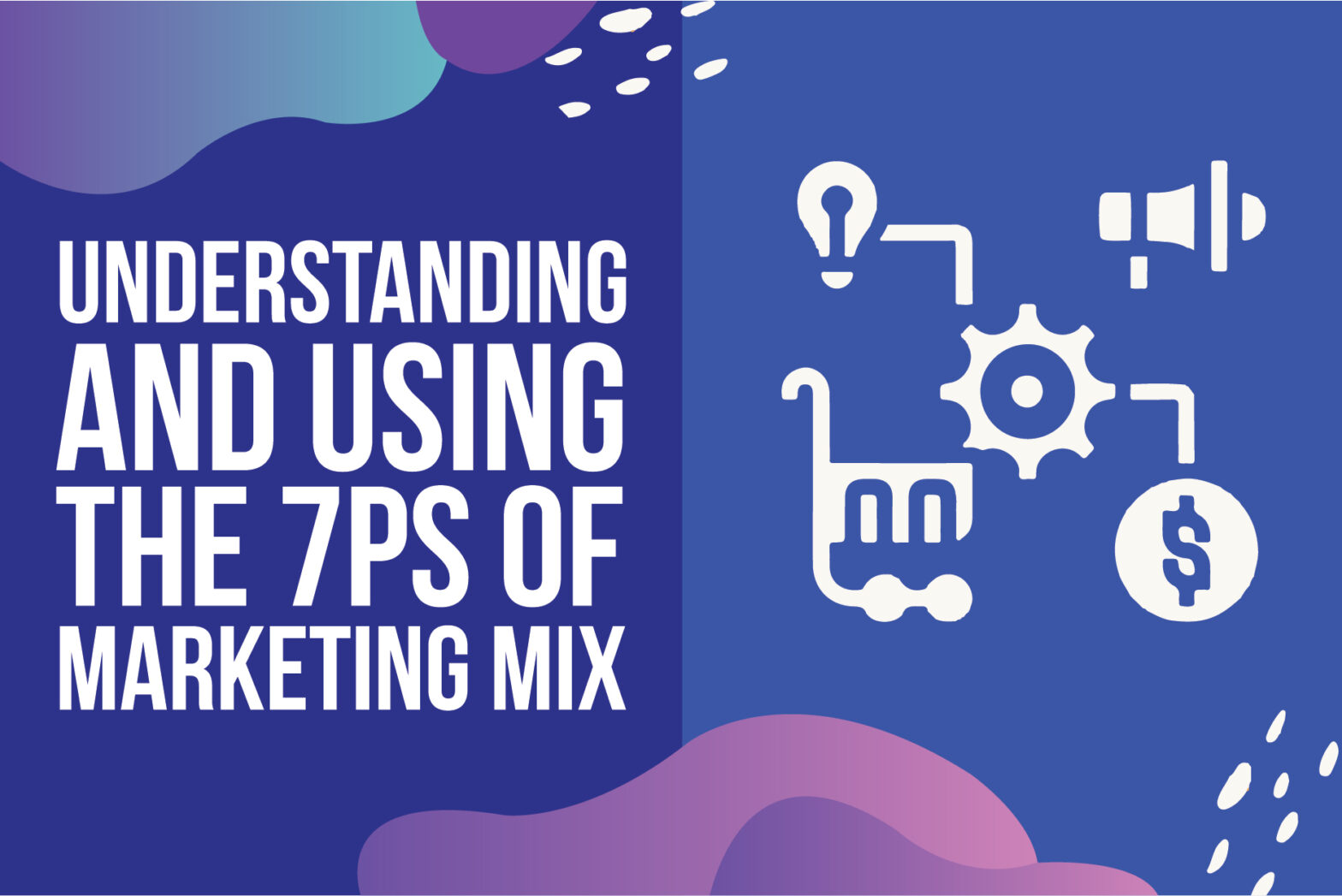
Understanding and using the 7Ps of marketing mix is key to success for small businesses. As you grow and expand your business, you need to consider each marketing plan element to focus your efforts on the best campaigns to suit your business.
A marketing mix is equal to a business strategy; it is a way to provide a framework to plan your marketing strategy. It is made up of different elements called the 7Ps. These include price, product, promotion, place, people, and process.
It would be best if you had a good marketing plan to run a successful business that will attract and keep customers. To find out how to increase your revenues, continue reading.
The First P Of Marketing Mix (Product)

The product is the first element of the marketing mix and arguably the most important. A company’s product must be able to meet the needs and wants of the target market. Additionally, it needs to be able to set itself out from the competition. Therefore, a company must carefully consider all aspects of the product when developing it, such as features, design, packaging, and branding.
A Detailed Look Into The Product
When it comes to marketing, the first thing you need to consider is the product. After all, with a great product, you will have something to market! So let’s take a closer look at what makes a product great.
There are a few key elements that go into making a product successful. First, it needs to be something that people want or need. It can’t be just nice to have – it needs to offer some tangible benefit.
Secondly, it needs to be well-made and fit for purpose. It must be reliable and user-friendly if it’s a piece of technology. If it’s a food product, it needs to taste good. And so on.
Thirdly, it needs to be priced correctly. People will only buy it if it’s not too expensive. They’ll think it’s only worth the money if it’s cheap. So you must locate that ideal midway ground.
And finally, it needs to be marketed correctly. If no one knows about it, even the best product in the world won’t sell. You must ensure you’re reaching your target audience and telling them why your product is the best on the market.
If you can get all these things right, you’re well on your way to having a successful product.
The Second P Of Marketing Mix (Price)

Pricing is an essential element of the marketing mix and must be carefully considered to maximize profits and market share. Prices must be set in line with competitor prices while also considering the cost of production and the desired profit margins.
Discounts and promotions can also be used as a pricing strategy to entice customers and boost sales. However, care needs to be taken to ensure these eat into profits sparingly.
Overall, pricing is a complex but vital part of the marketing mix and must be carefully considered.
How Pricing Plays An Important Role In The Marketing Mix
One of the key components of the marketing mix is pricing. It is the only component of the combination that brings in money. The other factors, such as promotion and product, only create awareness and interest.
Pricing must be carefully considered to maximize revenue and profit. The price must be high enough to cover the cost of the good or service but low enough to be affordable for the target market. The price must also be competitive to attract customers.
The Third P Of Marketing Mix (Place)

The place is the third p in the marketing mix. The place is the location where the product is available for purchase. The site can be a physical store or an online store. The critical thing to remember about the place is that it must be convenient for the customer. The site is only practical if the customer can easily find or purchase the product.
The place is an integral part of the marketing mix because it is where the customer can purchase the product. The right place can make it easy for the customer to find and buy the product.
How To Use Distribution Channel As An Important Part Of The Marketing Mix
There are many factors to consider when choosing a place for a product. The first is the target market. The product must be available in the right location to reach the target market. For example, if the target market is young adults, the product should be available in stores that young adults frequent.
Another factor to consider is the competition. The product should be placed in a location where it will be seen by most people and where it will be able to compete with other products. Finally, the price of the product must be considered. The product should be priced correctly for the target market and the location.
The Fourth P Of Marketing Mix (Promotion)

The fourth “P” of the marketing mix stands for promotion. It is the process of communicating a product’s or service’s value to customers and, ultimately, persuading them to purchase it. Promotional activities include advertising, public relations, events, social media, and direct marketing. The key to successful promotion is creating a campaign relevant to the target audience and aligning with the overall marketing strategy.
Which Mediums Are Right For Your Business, And How To Use Them?
There’s no one-size-fits-all answer to this question. The correct mediums for your business will depend on several factors, including your target audience, budget, and marketing goals. However, there are a few general tips that can help you choose the correct mediums for your business:
- Start By Identifying Your Target Audience. Whom are you trying to reach with your marketing? Once you know whom you’re targeting, you can narrow down the potential mediums.
- Consider Your Budget. What kind of marketing budget are you willing to accept? This will help you further narrow down your list of potential mediums.
- Think About Your Marketing Goals. What do you want your marketing strategy to accomplish? This will help you choose the mediums that are most likely to help you achieve your goals.
Once you’ve considered all these factors, you should know which mediums suit your business. Then, you can experiment with different mediums and see which ones work best.
The Fifth P Of Marketing Mix (People)

People are the fifth and final element of the marketing mix. They include the customers, employees, partners, and other stakeholders interacting with the company.
People are important because they create the demand for products and services. They also play a role in shaping the company’s image and reputation. Employees, in particular, can have a significant impact on the company’s success or failure.
The company must carefully manage its relationships with all its stakeholders. It must ensure that its employees are motivated and engaged. It must also build strong relationships with its customers and partners.
Who Is Your Target Audience, And How Can You Attract Them
To attract our target audience, we first need to know who they are. Our target audience consists of individuals passionate about health and fitness and seeking guidance on living healthier.
To attract these individuals, we need to provide them with valuable content to help them reach their fitness goals. We can do this by creating blog posts, videos, and other forms of content that offer tips, tricks, and advice on living a healthier life. Additionally, we can use social media to reach our target audience and promote our content.
The Sixth P Of Marketing Mix (Process)

The process is the sixth P of the marketing mix. It is the process of planning, creating, and executing a marketing plan. It includes market research, product development, advertising, promotion, and distribution. A marketing mix is a tool that helps businesses to plan and execute their marketing strategies.
How To Make The Customer Experience Simple And Seamless
Customer satisfaction is a crucial component of every organization. It is the first and last impression a customer has of your company, and it can make or break their decision to do business with you. There are a few key things you can do to make sure that your customer experience is simple and seamless:
- Make sure your service or product is easy to navigate and user-friendly.
- Clearly define your customer service policy.
- Your staff should receive polite and helpful training.
- After a sale, follow up with the customer.
The Seventh P Of Marketing Mix (Physical Evidence)

Physical evidence is the seventh and final P of the marketing mix. Anything that can be seen or touched reinforces the other six Ps. Physical evidence includes packaging, store design, product design, and even employee uniforms. It essentially reminds the customer that they are interacting with an authentic brand, not just a concept.
How Is It Packaged?
Physical evidence is significant in online marketing, where customers may never actually see or touch the product they are buying. In these cases, creating a solid physical presence that can be felt through product packaging, website design, and other branding materials is even more critical.
By creating a solid physical presence, businesses can ensure that their customers will remember them and continue to choose them over their competitors.
Conclusion
When it comes to marketing, there are various ways you can get your business to stand out from the crowd. To do this, marketers have developed a concept known as the 7Ps of the marketing mix. The 7Ps of the marketing mix are a marketing strategy to reach your target audience effectively. Understanding and using the 7Ps of marketing mix is an effective way to create a strong marketing strategy for your business. In this blog post, we will discuss all the components of the 7Ps of the marketing mix and how to use them for your business effectively.




